Do you have a question about the Samsung AM BXV Series and is the answer not in the manual?
Provides general safety guidelines for installation and usage.
Details different types and classifications of outdoor units.
Instructions for safely moving the outdoor unit.
Guidelines for combining outdoor units with indoor units.
Lists essential requirements for choosing an outdoor unit installation site.
Specific guidance for installing units near the seashore.
Defines the necessary space around the outdoor unit for ventilation and service.
Illustrates space requirements for installing multiple outdoor units.
Shows space requirements for a single outdoor unit installation.
Lists optional accessories required for connecting indoor and outdoor units.
General guidelines for installing the outdoor unit.
Details the requirements for constructing a solid base for the outdoor unit.
Specifies how to mount and anchor the outdoor unit securely.
Provides visual examples for proper drainage work for outdoor units.
Guidelines for installing outdoor units in different environmental conditions.
Instructions for installing the unit when obstacles are present.
Specific installation advice for areas with heavy snowfall.
Installation considerations for windy locations like seashore.
General guidelines and considerations for refrigerant pipe installation.
Guidance on selecting the correct refrigerant pipes based on capacity.
Specifies pipe grades and minimum thicknesses for installation.
Safety precautions and information for welding refrigerant pipes.
Details the nitrogen flushing process for welding pipes.
Instructions for cutting and flaring refrigerant pipes correctly.
Steps for properly connecting flared refrigerant pipes.
How to route and connect pipes for the outdoor unit.
Details on connecting pipes to the outdoor unit's front, left, or right side.
Guidelines for connecting pipes between multiple outdoor units.
Illustrates various refrigerant pipe connection configurations for H/P and H/R systems.
Illustrates how to connect pipes to the MCU and outdoor unit.
Details on calculating and adding refrigerant based on pipe length.
Explains how to calculate the total refrigerant amount needed for the system.
Provides examples for calculating refrigerant for HP models.
Provides examples for calculating refrigerant for HR models.
Specifies maximum allowable pipe lengths for H/P systems.
Details maximum height differences allowed for pipes.
Specifies maximum pipe lengths for H/R systems, including MCU connections.
Details height differences for H/R systems, including MCU connections.
Specifies maximum pipe lengths for H/R systems, including MCU connections.
Details height differences for H/R systems, including MCU connections.
Instructions for installing distribution headers, including port blocking.
Guidance for installing branch joints between outdoor units.
Specific instructions for installing outdoor joints.
Details specifications for different MCU models.
Instructions for connecting indoor units to the MCU.
Provides electrical specifications for various models and voltages.
Details how to route and connect power and communication cables.
Lists specifications and applicable conditions for protection tubes.
Shows wiring diagrams for single and three-phase power connections.
Guides on selecting appropriate solderless ring terminals for power cables.
Instructions for connecting power cables to terminal boards.
Steps for closing the control box cover after wiring.
How to properly secure the power cable within the unit.
Guides connecting ring terminals for 3-phase power cables.
Instructions for securely connecting the ground cable.
Information on installing the Solution device.
Guidance on the location for installing the interface module.
Explains the importance and methods of grounding for safety.
Details on how to perform grounding using specific cables and terminals.
Procedures for testing the system for leaks using nitrogen gas.
Steps for performing vacuum drying on pipes and indoor units.
How to insulate refrigerant pipes and branch joints to prevent condensation.
Guidance on choosing the correct insulator thickness based on conditions.
General instructions for insulating refrigerant pipes.
Details on insulating gas and liquid pipes, including spacing and grade.
Specifics for insulating pipes connected to the EEV kit.
Steps for insulating the distribution header and its connections.
How to insulate branch joints, including required thickness.
How to insulate pipes within the outdoor unit, sealing gaps and holes.
Illustrates refrigerant charging for single outdoor unit installations.
Illustrates refrigerant charging for module installations.
How the segment display shows initial unit status.
How the display shows the count of connected indoor units.
How the display shows MCU and indoor unit addresses.
Steps for setting outdoor unit installation options via switches.
Explains how to set various options using tact switches and displays.
Explains functions accessible via K1 button presses and holds.
Details functions controlled by K2 button presses.
Explains functions accessed via K4 button presses for settings.
Lists functions and displays for K4 button presses, including version and address info.
How to set MCU addresses and select MCU ports for indoor units.
Manual process for setting pipe addresses for indoor units.
Using remote controls to set pipe addresses for indoor units.
Automating pipe address setup using the auto pipe pairing function.
Pre-operation checks required before starting auto pipe pairing.
Checklist for final installation checks of outdoor and indoor units.
Checklist for verifying refrigerant pipe installation and insulation.
Checklist for power and communication cable connections and grounding.
Checklist for verifying unit address settings.
Checklist for confirming outdoor unit option settings.
Important warnings and steps before performing test operations.
A checklist to ensure readiness for auto trial operation.
Detailed procedure for performing the automatic trial operation.
Troubleshooting steps for E503 error during inspection.
Troubleshooting steps for E505 and E506 errors.
Guidance on actions based on refrigerant detection results.
| Brand | Samsung |
|---|---|
| Model | AM BXV Series |
| Category | Air Conditioner |
| Language | English |



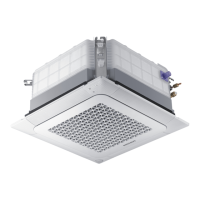

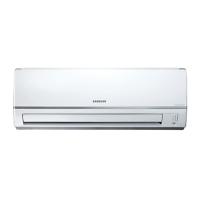


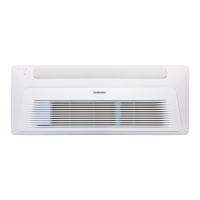
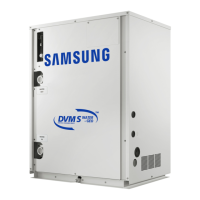
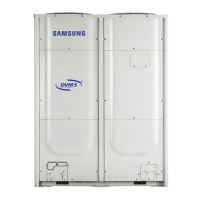
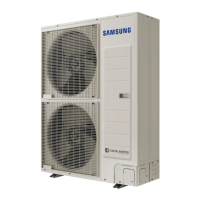
